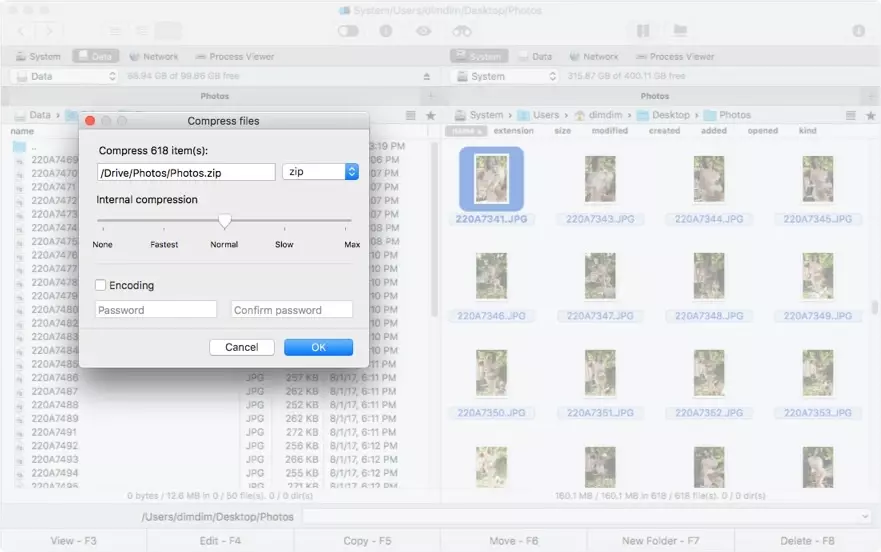Archive Utility can be easily found using either Finder or Mac Spotlight and is highlighted here as one of the few native compression capabilities on Mac that third-party solutions should not overshadow. Commander One is an exceptionally efficient file manager, handling archives and being the top archiver on Mac OS. Commander One empowers users to customize compression settings, supports multiple archive formats, and is the ideal solution for professionals seeking efficient Mac file extraction – such as handling file extensions.
What is Archive Utility Mac?
Archive Utility Archive Utility is a small program integrated within the macOS operating system. It allows compressing (archiving) and expanding files in the background without opening the utility window.
As with other applications for Mac, unlike other Mac applications, unlike other applications on Mac, the Archive Utility is located in the System folder. To access the Archive Utility Mac, go to /System/Library/CoreServices/Applications or to /System/Library/CoreServices in pre-Yosemite versions. You might utilize additional utilities, such as About This Mac, Network Utility, Screen Sharing, and many more.
To locate your Archive Utility on your Mac swiftly, start Finder and use the search bar to locate it. Alternatively, you can use the search bar and look for Archive Utility or launch Mac Spotlight to search.

Archive utility Mac applications: the most efficient method of compressing files
The capability to use archive software is crucial when working on a computer, as when you cannot download the software and remove files using it, you will not be capable of opening such formats as RAR 7Z GZIP or others. You need to be corrected if you believe that the built-in compression files on the Mac system can assist you in this regard. The fact is that integrated Mac software can assist you with ZIP files but not the other available archive formats.
In addition to being a file manager, Commander One can work with archives and is Mac’s top archiver. When setting the options, users can choose their own compression ratio and output format for the archive, including ZIP, TBZ, TXZ, TGZ 7Z, TZ, and TZ.
How do you unzip files on Macs?
To unzip files that have been compressed on a Mac, double-click the file that has been compressed, and the Archive Utility tool will unzip the files, resulting in an additional folder with its contents alongside the zipped directory on the desktop.
You can also right-click the folder and click Open to complete the same action if Archive Utility is your default. If you don’t, click right-click and choose Open using the Archive Utility.
How do you extract files from Mac?
If the question arises of how to extract a file on Mac, compressed files occupy less disk space and can be transferred over the Internet. A compressed folder can also store many files simultaneously, making storage and transfer more efficient. However, the method to uncompress files on Mac depends on the type of compression employed.
What are the reasons to choose an application from a third party to extract documents on Mac?
With the capability to extract data from numerous folders, Mac people in managerial or specialist roles can benefit more from third-party extraction software available for Mac. These are particularly useful for compressing and extracting files that don’t have the .zip extension, which is similar to .rar files.
Why should you use RAR or another compression format in place of ZIP? The reason is that RAR files are less bulky and more efficient. 7z files are smaller and offer an increased disk space up to 17 percent over ZIP. This is a significant distinction for a data center, also known as a private cloud, in which massive amounts of data are stored.
Java developers widely utilize the EAR, JAR, and WAR formats to improve DevOps workflows. Simply put, the different compression formats have different functions, and to get the most efficient compression rates, it is necessary to look beyond the standard ZIP standard.
Final Verdict
Commander One is the perfect solution for professionals requiring an effective Mac file extractor. Even at no cost, it can use .jar, .ear, and .war folders just like normal non-compressed folders. This reduces the disk, reading, and writing cycles and time. The Pro version allows RAR extraction, TBZ, 7z, and TGZ extraction and compression, and deep integration with search for all kinds and types of compression folders.
Tyler Hoffman is a versatile writer and blogger who thrives on the excitement of exploring an array of topics. With a keen interest in everything from technology and travel to health and lifestyle, Tyler crafts engaging content that appeals to a diverse audience. His writing style is both informative and entertaining, making complex subjects easy to understand.
Contact email: [email protected]
